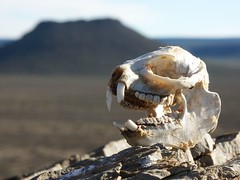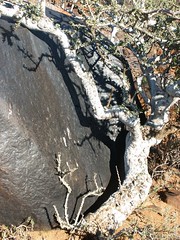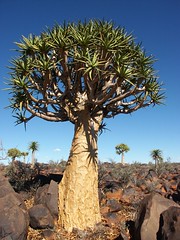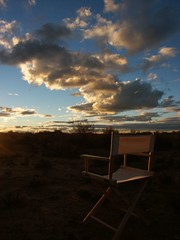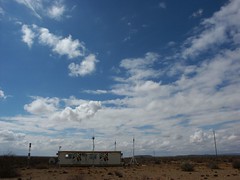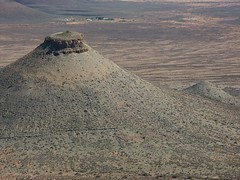
Pramberg
by Rob Millenaar.
On Pramberg
The farmer's son Mondré has been roaming the hills around here and he knew that we would enjoy a hike to the top of the Pramberg. Now, Pram is the Afrikaans word for tit and the reason for the name of the hill is obvious as it looks like a nicely formed woman's breast from a distance, complete with distinct nipple.
The hike was easy and worth the effort. Stunning views all around. I made a 360 degrees panorama from the top of the nipple, but the file is too large to post anywhere. Erosion has formed these hills over the past millions of years. The harder caprock, consisting of Dolorite, has protected the underlying softer rock until the layer becomes undercut and finally crumbles too, giving these slopes their characteristic shape.
On the top we found small pieces of quarz and, surprisingly, fragments of ostrich egg shells. Through the ages, Bushmen have used these eggs to store their water supplies in. It seems that they stored many of these on the top of this hill, where the remnants can be found to this day. Elsewhere complete eggs are found and Jan, the farmer and our host, has one intact egg in his collection.
The Karoo desert has many surprises in store for those who are willing and able to appreciate its beauty.
Rob
